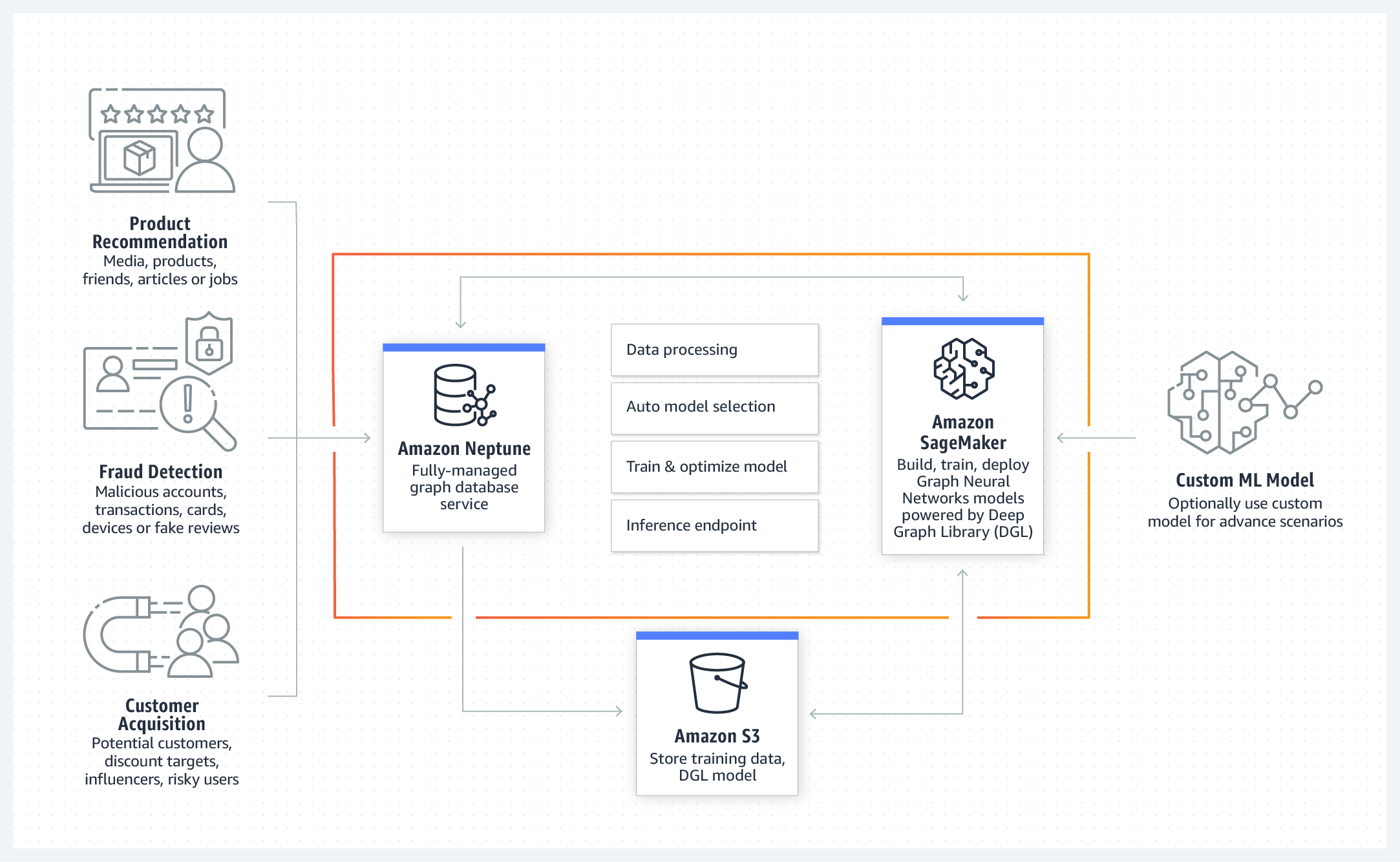Amazon Neptune ML
Easy, fast, and accurate predictions for graphs
Amazon Neptune ML is a new capability of Neptune that uses Graph Neural Networks (GNNs), a machine learning technique purpose-built for graphs, to make easy, fast, and more accurate predictions using graph data. With Neptune ML, you can improve the accuracy of most predictions for graphs by over 50% when compared to making predictions using non-graph methods.
Making accurate predictions on graphs with billions of relationships can be difficult and time consuming. Existing ML approaches such as XGBoost can’t operate effectively on graphs because they are designed for tabular data. As a result, using these methods on graphs can take time, require specialized skills from developers, and produce sub-optimal predictions.
Using the Deep Graph Library (DGL), an open-source library to which Amazon Web Services contributes, that makes it easy to apply deep learning to graph data, Neptune ML automates the heavy lifting of selecting and training the best ML model for graph data, and lets users run machine learning on their graph directly using Neptune APIs and queries. As a result, you can now create, train, and apply ML on Amazon Neptune data in hours instead of weeks without the need to learn new tools and ML technologies.
Benefits
Make predictions on graph data without ML expertise
Neptune ML automatically creates, trains, and applies ML models on your graph data. It uses DGL to automatically choose and train the best ML model for your workload, enabling you to make ML-based predictions on graph data in hours instead of weeks.
Improve the accuracy of most predictions by over 50% *
Neptune ML uses GNNs, a state of art ML technique applied to graph data that can reason over billions of relationships in graphs, to enable you to make more accurate predictions.
* Neptune ML uses GNNs to make predictions that can be more than 50% more accurate than non-graph machine learning, based on published research from Stanford University.
Use cases
Fraud detection

Companies lose millions (even billions) of dollars in fraud, and want to detect fraudulent users, accounts, devices, IP address or credit cards to minimize the loss. You can use a graph-based representation to capture the interaction of the entities (user, device or card) and detect aggregations such as when a user initiates multiple mini transactions or uses different accounts that are potentially fraudulent.
Identity resolution

An identity graph provides a single unified view of customers and prospects based on their interactions with a product or website across a set of devices and identifiers. Organizations use identity graphs for real-time personalization and advertising targeting for millions of users. Neptune ML automatically recommends next steps, or product discounts to certain customers based on characteristics like past search history across devices or where they are in the acquisition funnel.
Knowledge graph

Knowledge graphs consolidate and integrate an organization’s information assets and make them more readily available to all members of the organization. Neptune ML can infer missing links across data sources, identify similar entities to enable better knowledge discovery for all.
Product recommendation

Traditional recommendations use analytics services manually to make product recommendations. Neptune ML can identify new relationships directly on graph data, and easily recommend the list of games a player would be interested to buy, other players to follow, or products to purchase.
How it works

Pricing
There are no up-front investments needed. You only pay for the Amazon Web Services resources [WP1] used such as Amazon SageMaker, Amazon Neptune, and Amazon S3.
Getting started with Neptune ML
The easiest way to get started with Neptune ML is to use the pre-built Amazon CloudFormation quick-start templates. You can also walk through the Neptune ML notebooks to see end-to-end examples of node classification, node regression, and link prediction using the pre-built CloudFormation stack.






